U.S. Irrigation Pushed Eastward By Drought and Financial Risks
Irrigated agriculture’s march into Midwest and South could increase competition for water.
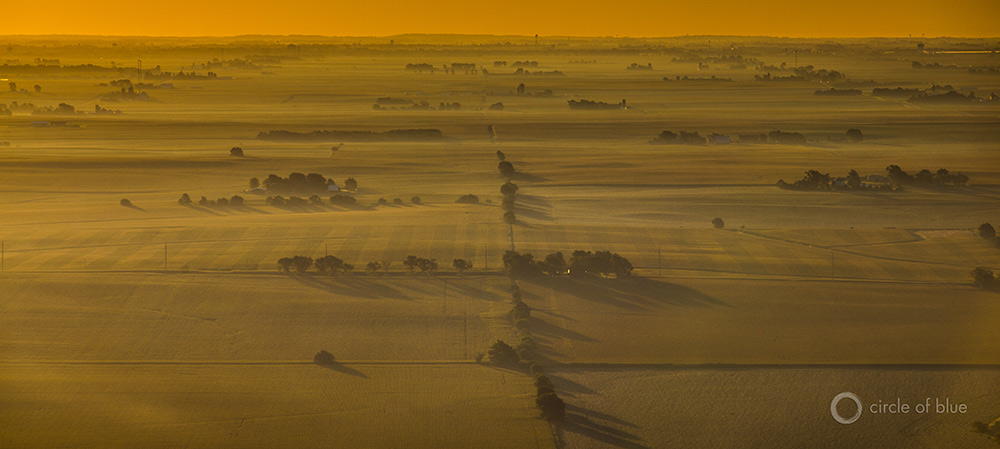
Farm fields in Illinois glow in the early morning light. Illinois is one of many states in the eastern United States where irrigated farming is expanding. Photo © J. Carl Ganter / Circle of Blue
By Brett Walton, Circle of Blue
The canals, reservoirs, pumps, and pivoting sprinklers that transformed the American West in the 20th century from desert and grassland into the nation’s primary fruit and vegetable producing region are spreading eastward.
From the Deep South, the Mississippi River Delta, and across the Midwest, the basic equipment of modern irrigated agriculture is producing more reliable harvests, more productive use of scarce water supplies, and bigger paychecks. Just as in the West, eastern farmers also say irrigation is a tool for managing risk, providing insurance against erratic rainfall and rising temperatures brought by a warming world.
Between 1997, when irrigation in the West peaked, and 2012, the most recent year for which national statistics are available, irrigated acreage in Georgia increased 46 percent. In both Illinois and Mississippi, the increase was 49 percent. In Indiana, 71 percent; in Michigan, 45 percent. And South Carolina and Tennessee, starting from a much smaller base, grew 79 percent and 212 percent, respectively, according to the U.S. Department of Agriculture’s 2012 Census of Agriculture.
Three decades ago only two non-western states ranked among the nation’s top 15 irrigated states. Today five are in the upper tier, with Georgia, Mississippi, and Missouri having joined Arkansas and Florida.
Before 1997, these states irrigated 11.8 million acres. In 2012, that number had grown to 14.8 million acres. Across the Western states irrigation serves 40.4 million acres, down from 43.9 million acres in 1997, the peak year, according to the Census of Agriculture.
Technical specialists, though, warn that as irrigation equipment and practices are more widely adopted in the eastern half of the nation they have the potential to stress rivers, drain aquifers, and pollute streams with fertilizers. State water management officials also are concerned that the growing use of irrigation will heighten the competition for water in regions that never before experienced tensions over water, and where water use and management regulations anticipated that rainfall would supply most of the water needed by farmers.
“Every state will be different,” Mark Davis, director of the Tulane Institute on Water Resources Law and Policy, told Circle of Blue in an interview about the effects of the irrigation shift. “But I’m not sure any of them are geared up for what might be in store.”
What is in store is a broad expansion of agricultural water use east of the Great Plains, especially during dry periods, which climate scientists predict will become longer and more frequent in the region as the planet warms. Eastern states traditionally have had enough rainfall to produce a marketable crop. But more and more farmers are turning to rivers, streams, and aquifers to smooth out nature’s hydrological bumps and boost yields.
Three main factors explain the shift. Severe droughts in recent years — in the Midwest in 2012 and in the Southeast in 2007 — caused billions in crop losses and revealed to farmers the economic risk of relying on the caprice of weather. At the same time, record corn and soybean prices boosted farm profits, giving farmers the capital to invest in irrigation infrastructure. Third is that water, on the surface and below ground in the East, seemed in abundant supply.
These and other factors contributed to the dynamic shift in irrigation practices eastward. In the last two years manufacturers of irrigation equipment posted record sales and opened dealerships in new markets. Irrigation equipment sales for Lindsay Corporation, an Omaha, Nebraska-based manufacturer, ballooned 69 percent between 2011 and 2013, to $US 385 million. Much of the increase was due to irrigation sales in the East. In Congress, southern senators lobbied successfully for an amendment in the 2014 U.S. farm bill that allows non-western states for the first time to apply for federal irrigation grants.
The growth in irrigated agriculture is adding to new pressure on water resources in the East. Cities and industries want a larger share of the region’s surface and groundwater, while environmental and sporting groups push for policies that guarantee a minimum amount of water in a river to sustain fisheries and wildlife habitats.
“Water is highly competitive,” Ray Huffaker, an agricultural economist at the University of Florida, told Circle of Blue. “It’s highly competitive among municipalities, agriculture, industry, and ecosystems. Whenever you talk about increasing the water supply for any of those uses — because water is scarce — it often comes at the expense of something else.”
Competition for water is reflected in legal fights between Alabama, Florida, and Georgia over the water supply in the Apalachicola-Chattahoochee-Flint basin, and in collapsing groundwater tables in Arkansas.
But prudence can still win out, irrigation advocates and farm analysts assert. They say that states embarking on an irrigation expansion need to set clear rules to curb the excesses of irrigators and manage conflict while reaping the benefits.
Calculating the Benefits
Withdrawing water from a river or pumping it from underground was necessary in the 17 states west of the 100th meridian to turn semiarid valleys and harsh deserts into gardens.
In the moist East, however, irrigation is less the marquee star of the farm and more a supporting actor cast for a particular scene. The amount of rainfall in the region is not the problem. The timing is. Crops, especially corn, need water at certain points in their growth cycle. Deprived during the critical stages, they wither.
“A big example is the mid-South,” said Steve Evett, a U.S. Department of Agriculture soil scientist, referring to the quadrangle formed by Arkansas, Louisiana, Mississippi, and Tennessee.
“They get fifty inches or more in a year, and yet in summer when the crops are growing they can go two weeks without rain,” Evett told Circle of Blue. “That severely depresses the yield. Having irrigation allows farmer to irrigate once or twice a season but have protection from yield losses.”
Unlike their peers in the High Plains, these farmers are not spraying water around the clock. They irrigate during brief dry periods to supplement the rain. That keeps the crop losses, which can be substantial during drought, at bay. Irrigation also increases water’s productivity, meaning more crop is grown for each drop that falls on the field. For grains, Evett said, irrigation doubles the productivity.
The agricultural economics departments at land grant universities draw up a model budget each year for farmers. The budgets show expected costs and revenues for crops grown in their states both with and without irrigation. Irrigated crops, despite higher operating costs, almost always provide a higher return.
In Georgia, for example, an acre of dryland corn — grown solely with available rainfall — is expected to yield 85 bushels in 2014 and a profit of $US 34. Irrigated corn yields 200 bushels and a $US 51 profit, 50 percent higher than dryland corn.
For peanuts the spread between dryland and irrigated profits is nearly double. For soybeans the gap widens again; the return on an irrigated acre is 3.5 times higher.
Irrigating during those few dry weeks can save a crop — and turn a loss into a much larger profit.
Irrigation Needed in Era of Climate Change
The capacity to irrigate will be vitally important in the coming decades as the globe warms and familiar weather patterns mutate, says Evett. Each acre needs to be more productive to keep agriculture’s land footprint small while feeding a growing population. That is easier to do with a reliable water source.
Average precipitation may not change much in the Southeast but variability will, said Ken Kunkel, a scientist at the National Climatic Data Center. “There will be heavier rain events with longer dry spells in between,” Kunkel told Circle of Blue.
In the Midwest the story is similar. Though total precipitation will most likely increase, less will come in the summer growing months and there will be more consecutive dry days, according to the National Climate Assessment, released in May.
“More rainfall but longer periods between rainfall — sounds like a prescription for irrigation,” Lyndon Kelley, a Michigan State University irrigation specialist, told Circle of Blue.
Several states, Alabama and Arkansas among them, are providing incentives for farmers to store the surges in rainfall on their property. Two years ago the Alabama legislature approved a $US 10,000 tax credit for farmers who install irrigation systems, including small reservoirs and new wells. An irrigation district in Arkansas built 243 on-farm reservoirs in recent years to hold rain and eventually river flows, with plans to build 330 more.
Increased farm production, higher profits, less risk for the farmer — those are the benefits of irrigation. But moving water to farms is also at the core of some of the East’s worst water struggles.
Navigating the Risks
Irrigated agriculture accounts for 80 to 90 percent of the nation’s consumptive water use. Where irrigation systems proliferate, the water balance can be drastically altered.
Disputes over scarce supplies and calamitous drops in the water table already plague the most heavily irrigated areas in the eastern regions — Georgia’s Flint River Basin and the Mississippi Delta.
Part of a decades-long struggle between Alabama, Florida, and Georgia, the Flint is home to such a concentration of irrigation wells that Gil Rogers, an attorney with the Southern Environmental Law Center, warns of “permanent drought” in the basin. By that he means water demands that consistently rise above the average supply.
One example: a U.S. Geological Survey observation well in Dougherty County, Georgia in the Flint basin shows that the water table dropped 18 meters (60 feet) since 1979, a steady downward drag for more than three decades. When aquifers collapse, the consequences can spread far from the field.
“In the Flint, groundwater is hydrologically connected to the river,” Rogers told Circle of Blue. “You can watch creeks being drawn down as a result of using groundwater nearby, even if water is not directly being taken out of the river. The cumulative impacts are severe.”
The Mississippi Delta, meanwhile, has water problems more commonly associated with California’s Central Valley or the Ogallala Aquifer, beneath the High Plains. Those areas — two of the most heavily irrigated in the world — depend on groundwater to sustain farm economies that in 2012 produced $US 45 billion in the Central Valley and $US 30 billion in the Ogallala region. Yet in both areas wells are going dry and aquifers are shrinking to the point where farming itself, in a tragedy of the commons, is imperiled.
So it is in Arkansas, now the nation’s third-largest irrigation state. Farmers used so much groundwater in the last century to grow rice and cotton that the economic viability of the region’s agrarian enterprise is threatened. Though stitched with rivers and abutting the Mississippi, the mightiest in North America, Arkansas farmers draw 85 percent of their irrigation water from wells. One quarter of the water in the state’s main aquifer has been pumped out. In many wells the water level dropped more than 30 meters (100 feet), increasing the cost of farming.
“The aquifer can handle only half of what we’re pumping out of it,” Edward Swaim, water division manager for the Arkansas Natural Resources Commission, told Circle of Blue. “We’re getting near peak use.”
The decline is a failure of regulation. Farmers are required to report their water use, but there is no restriction on how much they can pull out of the ground. Only if the state declares a shortage would officials step in to allocate water. That has never happened, Swaim said.
The remedies are two old-fashioned reclamation projects — the $US 1.3 billion Bayou Meto and Grand Prairie projects — that are straight out of the western playbook. The two systems of canals and reservoirs, serving more than 600,000 acres, will offer farmers in eastern Arkansas an alternative to groundwater. Pulling water out of the Arkansas and White rivers, the expansive systems will comprise hundreds of miles of canals and hundreds of small, on-farm reservoirs; 65 percent of the cost will be picked up by U.S. taxpayers.
Brett writes about agriculture, energy, infrastructure, and the politics and economics of water in the United States. He also writes the Federal Water Tap, Circle of Blue’s weekly digest of U.S. government water news. He is the winner of two Society of Environmental Journalists reporting awards, one of the top honors in American environmental journalism: first place for explanatory reporting for a series on septic system pollution in the United States(2016) and third place for beat reporting in a small market (2014). He received the Sierra Club’s Distinguished Service Award in 2018. Brett lives in Seattle, where he hikes the mountains and bakes pies. Contact Brett Walton

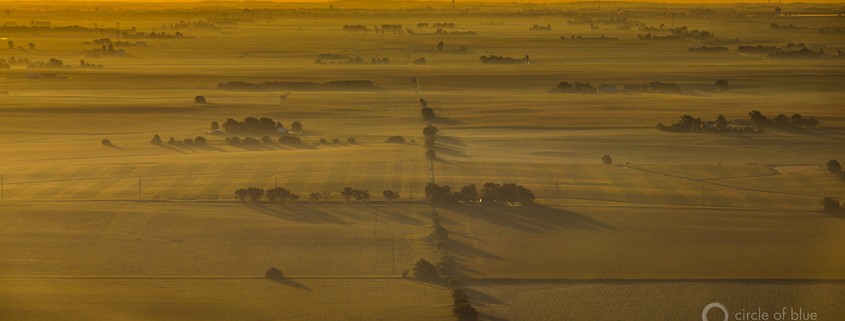


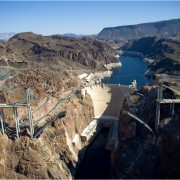
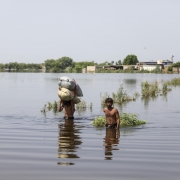
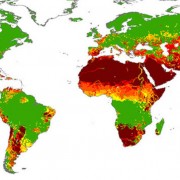
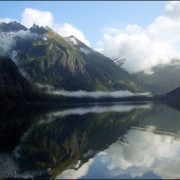



Wow. This is not going to turn out well for either the environment or ag sustainability. Farmers in the west have promised to use less groundwater every time they’ve lobbied for canals, and they’ve been wrong (or lied) EVERY TIME: They will use all the canal water AND continue to deplete groundwater.
They may have bad Chinese food in Arkansas, but now they’ve got Chinatown.
The increase in eastern and midwestern irrigation has been underway for many years but is bound to accelerate under climate change. Interestingly, as shown by this excellent study, that increase has been accompanied by decreases in western irrigated acreage mostly due to increasing costs (explicit or implicit) of irrigation water and the environmental consequences of heavily irrigated agriculture. This represents a grand reversal of the great westward movement of agriculture in the late 19th and early 20th centuries that resulted from public policies like the Reclamation Act and the various land acts. An interesting history!